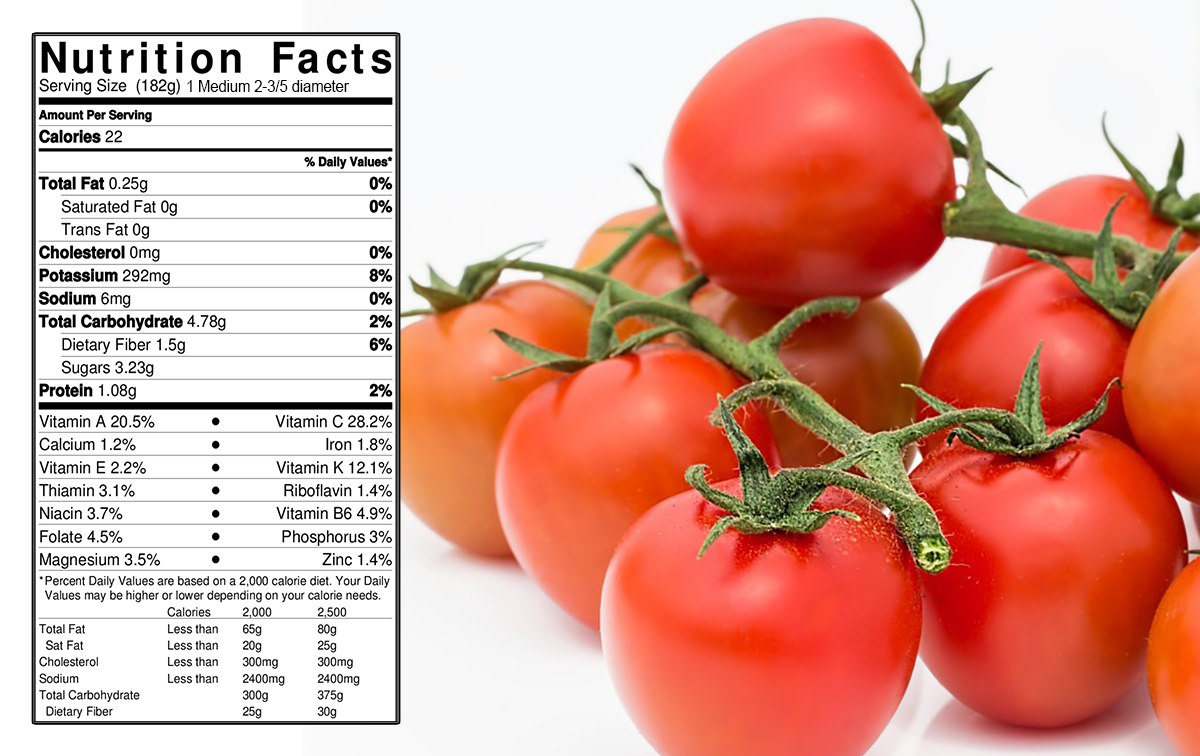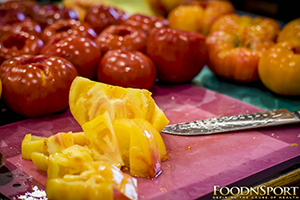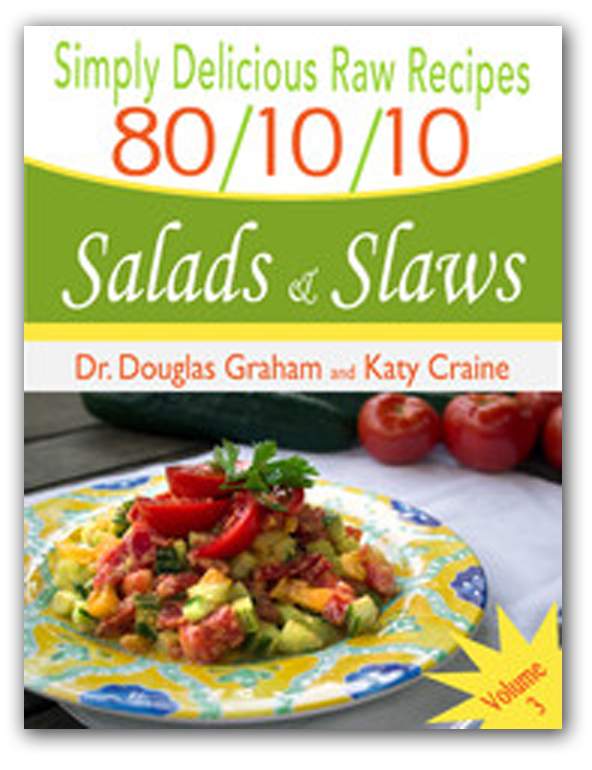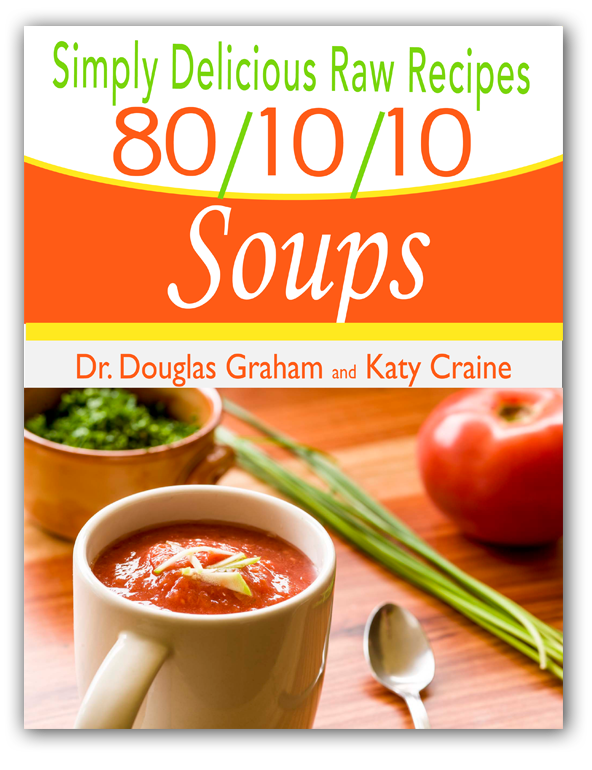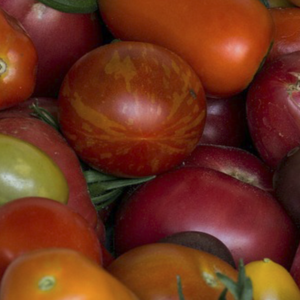
The Rise of the Tomato
The wild ancestors of the
tomato are found in South America, but it was the Aztecs of Mexico who first cultivated them. From early European accounts, it’s likely that this first tomato was yellow, not red.
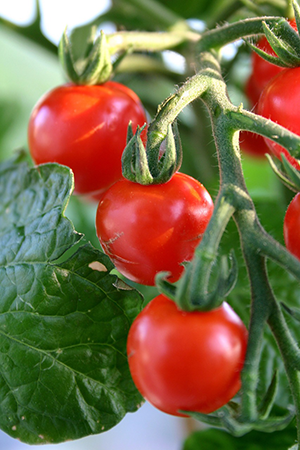
In Spain and Italy tomatoes were called “golden apples” or “love apples;” however in England and her colonies the plants were thought to smell bad — a “ranke and stinking odour” as John Gerard put it. Because tomatoes are in the nightshade family, some colonists even considered them poisonous.
It wasn’t until the mid-1800’s that tomato devotion became widespread. One horticulturalist estimated that tomato production quadrupled in the 1840’s. By 1866, tomatoes could be purchased in most large cities year round. The famed 1883 U.S. Supreme Court decision decreeing tomatoes to be vegetables, rather than fruits, had more to do with collecting taxes on a highly profitable industry than quibbles over nomenclature (tomatoes are, botanically speaking, fruits).
Health Benefits of Tomatoes
All tomatoes have notably high levels of vitamin C, biotin, molybdenum, vitamin K, copper, manganese, and potassium — one cup contains about the same amount of potassium as a medium banana — but each color of tomato really shines in one or two nutrients. Yellow tomatoes have nearly twice as much zinc and niacin as the other two, while orange tomatoes contain by far the most vitamin A and, surprisingly, twice the amount of sodium.
In fact, some researchers believe that the form of lycopene found in orange and yellows is more readily absorbed by the body than the lycopene found in red tomatoes. Lycopene is an antioxidant that has been linked to cancer prevention, sunburn prevention, reduced heart disease, and is believed to reduce symptoms of asthma.
Eating ripe tomatoes is most important for those with sensitivities to nightshades. Tomatoes picked green have higher levels of solanine, an alkaloid that can cause irritation or inflammation, even after ripening.
Try These Varieties
In US Supermarkets, hundreds of varieties are known under umbrella terms like “Cherry,” “Roma” or “Heirloom.” Heirloom tomatoes are the most genetically diverse, were developed more than 50 years ago, and have unusual characteristics. Most heirlooms can only be found at Farmers Markets, but are slowly making their way into mainstream supermarkets.
Super Sweet 100’s:
You’ll find these bright red, hybrid cherry tomatoes everywhere from the supermarket to the patio-pot garden.
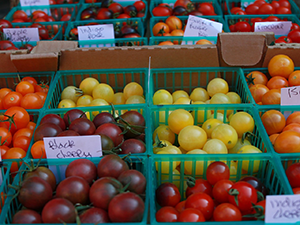 CSW 2014-8345-Wide.png
CSW 2014-8345-Wide.png
Sungolds:
Intensely sweet and low acid, this orange hybrid cherry is starting to pop up in supermarkets in the UK and the US.
Pears:
These bite-size, mild teardrop tomatoes originated in Europe in the 1700s. They may also be red or orange, but yellows are most common.
Campari:
Often sold attached to their green vines, or trusses, these are the most common greenhouse tomato. They are larger than a cherry tomato and may be yellow or red.
Brandywine:
This poster child of heirloom tomatoes is this enormous, purple-pink beefsteak with a juicy, meaty interior excellent for slicing into thick wedges or jut eating out of hand.
Peach Tomato:
Pale yellow and fuzzy, these small heirlooms are low acid and sweet, one of the tastiest and most unusual tomatoes at Farmers Markets.
Green Zebras:
These striking heirlooms are green when fully ripe and have a lemony tang.
How to Select and Store Tomatoes
Tomatoes come in so many beautiful colors (including green!) that it’s hard to identify when they’re ripe by just looking at them. The best tomatoes will have a strong, sweet and herby aroma and be soft to the touch. Some will show a slight wrinkling of the skin when they’re really ripe.
If buying supermarket tomatoes, the small-sized tomatoes will tend to have the best flavor and concentration of sugars. Tomatoes still attached to the vine are often harvested closer to ripe, and will also have a better flavor. Pay attention to where tomatoes come from; it’s estimated that Florida tomatoes are sprayed with up to 8 times the volume of pesticides as Californian tomatoes.
The flavor of most supermarket tomatoes can be improved by allowing them to ripen in a warm area that gets moderate air flow. To speed up ripening, place tomatoes in a paper bag with an apple or banana. Store your tomatoes at room temperature (not in the refrigerator!).
